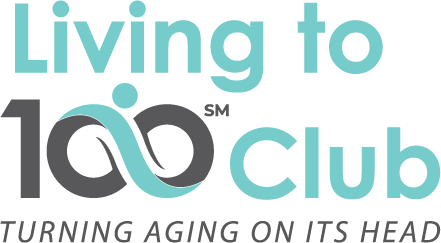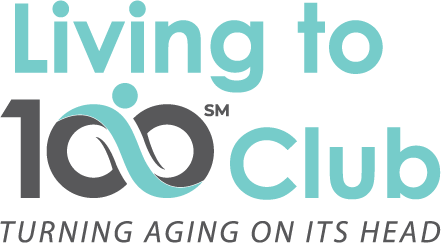Photo by Elle Hughes
According to the World Health Organization, cancer is the second leading cause of death worldwide and accounts for about 1 in 6 deaths globally. We also know that psychological and behavioral factors can be important in an individual’s adjustment to this disease. Even though up to a third of deaths from cancer are due to lifestyle, behavioral, and dietary risks, the person with a cancer diagnosis is also vulnerable to emotional reactions including depression, guilt and self-blame, difficulty with decision-making, strained interpersonal relationships, hopelessness, and death anxiety. Early diagnosis and treatment are essential, and proper medical care and behavioral health care are invaluable, whether the condition is curable or in advances stages with little chance of cure.
The following is derived from the
Handbook of Health and Behavior: Psychological Treatment Strategies for the Nursing Home Patient
Joseph M. Casciani, PhD
This is part of a series where Dr. Casciani makes you aware of and informs you about series medical conditions your patient or loved one may be facing.
A more detailed, clinical, and complete description can be found in the handbook.
Medical Condition – CANCER
The human body contains approximately 15 trillion cells and every cell contains DNA or genetic material that is the blueprint for building body structures. Cancer is not one disease, but many diseases, in which the body’s building process goes wild. There are well over 100 types of cancer, which are classified according to the cell of origin. A tumor, also called a neoplasm, is a new and abnormal growth of cells that serves no useful function and may interfere with healthy tissue function.
Not all tumors are cancerous
Tumors may be benign in that they grow slowly and do not invade surrounding tissue. They do not recur if removed. On the other hand, malignant tumors are those capable of destructive growth and have the ability to metastasize or invade surrounding tissues and move to other parts of the body.
Any type of cell in the body can be a source of cancer.
They are named according to the tissue from which they arise:
• carcinoma – epithelial cells
• sarcoma – bone, muscle, or other connective tissue
• lymphoma – lymphatic system
• leukemia – blood cells in blood precursor cells
• melanoma – pigment-providing cells usually of the skin
Each type of cancer may progress at a different rates and thus respond to treatment in different ways. The exact cause of cancer is not known.
Factors known to increase risk of cancer:
• heredity
• chronic physical irritation of a body part
• smoking and tobacco use
• radiation
• ultraviolet rays
• some viruses
- cancer-causing infections
Treatments
Many modalities are available to prevent, control or cure cancer including chemotherapy, radiation therapy, immunotherapy, surgery or any continuation of these methods. A cure for cancer is usually defined as no evidence of cancer for 5 years after treatment. The goal of treatment may be aimed at prevention of metastasis and thus recurrence of disease, or palliative which is directed toward relief of symptoms or complications of cancer. Surgical procedures may be preventative, curative, palliative or reconstructive.
Prevention procedures include removing a mole or polyp which may become cancerous.
Curative surgery is most extensive and involves not only removal of a tumor but of the surrounding tissue.
Palliative surgery is directed toward reducing the size or retarding the growth of a tumor.
Reconstructive surgery is directed toward achieving maximal functioning or correcting disfigurement. Simple surgical procedures usually involve removal of the tumor while surrounding tissue is intact. Radical surgical procedures involve removal of some of the underlying tissue.
Chemical agents that destroy cancer cells are called antineoplastic medications.
This type of therapy is called chemotherapy. Unfortunately these chemicals not only destroy cancer cells but may also damage normal cells that grow rapidly like hair follicles, skin, the lining of the digestive tract and bone marrow. The toxic effects of chemotherapy are hair loss, loss of appetite, nausea, vomiting, diarrhea, fatigue, and suppression of bone marrow functions.
These side effects add to the stress of the illness.
With radiation therapy high energy rays are used to damage cancer cells and prevent them from growing and responding. Radiation may be administered externally with machines that beam high energy beams at the body or internally with insertion of small amounts of radiation into the body. As with chemotherapy the procedures may also result in toxic side effects that add to the stress level and which can occur immediately or weeks and months later.
While survival rates have improved, for many patients and their families cancer means death. Patients and their families must make many decisions under intense stress. Treatment for cancer can be an emotional rollercoaster. Surgery, chemotherapy, radiation and immunotherapy and such treatments as bone marrow transplantation can have significant intrapersonal and interpersonal impact, and the trauma of diagnosis and treatment may persist for some time. This led to the development of the field of psycho-social oncology and to methods of intervention that help with the stress of cancer.
What are the Medical Consequences?
Cancer treatment is based on the type of cancer, the stage of the condition, and the extent to which it has spread to surrounding tissue. Similarly, the goals of treatment also vary, and range from cure, to the prevention of metastasis (i.e., spread to other tissue), to palliative approaches (relief of symptoms and complications, rather than cure). Increased physical debility can compound the treatment decisions of the patient who is faced with choices between surgery,
chemotherapy, radiation, bone marrow transplant, and other interventions.
What are Contributing Factors?
There are some behavioral or psychosocial factors that contribute to the onset of a cancerous condition, including smoking and tobacco use, unhealthy diet, and being overweight.
What Negative Attitudes can Develop?
• unrealistic fears about prognosis
• unrealistic fears about loss of functioning, physical changes, changes in body image and attractiveness, weight changes, hair loss, nausea and other factors associated with chemotherapy
- fears of abandonment
- anticipatory grief

